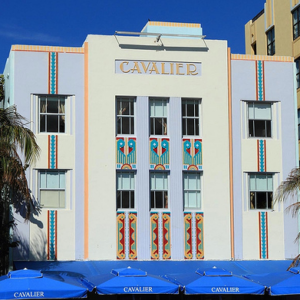The top 10 criticisms to Art Deco – with examples
Understanding why some people don’t like art deco is interesting because it offers insights into subjective aesthetic preferences, cultural backgrounds, and the diversity of tastes among individuals. It also provides an opportunity to challenge assumptions and biases, and create more inclusive artistic and design spaces. Despite criticisms, art deco remains a vibrant and influential artistic movement that continues to inspire and captivate people around the world.
These are the 10 more usual 1o criticisms of Art Deco, along with examples:
- Lack of originality: Art Deco borrowed heavily from other styles, such as Art Nouveau, Cubism, and Futurism, without adding anything new or innovative to the mix. An example of this criticism can be seen in the work of Tamara de Lempicka, who is known for her Art Deco portraits that borrow heavily from Cubism and Futurism, without adding any significant new elements to the mix.
- Emphasis on superficial aesthetics: Art Deco prioritized form over function, creating designs that were visually striking but often impractical or uncomfortable to use. An example of this criticism can be seen in the design of the Chrysler Building in New York City, which features a highly decorative spire that served no functional purpose, but was added purely for its visual appeal.
- Overreliance on industrialization: Art Deco embraced industrialization and mass production, but critics argue that this resulted in designs that lacked a human touch and were dehumanizing in their machine aesthetics. An example of this criticism can be seen in the design of the SS Normandie, a French ocean liner that was a triumph of Art Deco design but featured interiors that were cold and sterile, with little warmth or humanity.
- Exclusivity: Art Deco was associated with luxury and glamour, making it inaccessible to many people and reflective of broader social and economic inequalities. An example of this criticism can be seen in the designs of Cartier, which created high-end jewelry and accessories that were beyond the reach of all but the wealthiest individuals.
- Lack of cultural depth: Art Deco was criticized for being superficial and lacking cultural or historical depth, compared to other art movements that explored deeper themes and ideas. An example of this criticism can be seen in the work of Erté, a Russian artist and designer who created Art Deco fashion illustrations that were beautiful and intricate, but lacked the depth and meaning of other contemporary art movements.
- Fetishization of technology: Art Deco celebrated technology and progress without considering the negative consequences, such as environmental damage and social inequality. An example of this criticism can be seen in the design of the Hoover Dam, which was a marvel of Art Deco engineering but had significant negative impacts on the surrounding environment and indigenous communities.
- Reinforcement of gender roles: Art Deco often depicted women as sexualized objects or decorative accessories, reinforcing traditional gender roles and stereotypes. An example of this criticism can be seen in the work of Romain de Tirtoff, also known as Erté, whose fashion illustrations often depicted women as elegant, exotic objects to be admired rather than as complex human beings with agency and depth.
- Lack of diversity: Art Deco was dominated by European and American artists, with little representation from other cultures or perspectives. An example of this criticism can be seen in the fact that Art Deco designs often drew heavily on non-Western cultures such as ancient Egypt or Japan, but rarely featured contributions from actual artists or designers from these cultures.
- Disconnect from social issues: Art Deco was criticized for being apolitical and disconnected from the pressing social issues of the time, such as poverty, racism, and fascism. An example of this criticism can be seen in the fact that Art Deco designs rarely addressed these issues directly, instead focusing on aesthetics and luxury.
- Commercialization: Art Deco was heavily commercialized, with many designs created for commercial products such as cars, furniture, and fashion, leading to accusations that the movement was more interested in making money than creating art. An example of this criticism can be seen in the designs of Raymond Loewy, who created iconic Art
Criticism of an entire art style can be problematic as it risks oversimplifying and dismissing the complexity and diversity of artistic expression within that movement. Art styles emerge in response to cultural, historical, and artistic trends, and they can evolve and change over time. While it is possible to identify common elements or characteristics that define a particular style, it is important to recognize the diversity of individual artists and their unique contributions to that movement. Furthermore, artistic tastes and preferences are subjective, and what one person considers beautiful or valuable may not be the same for another. Therefore, it is important to approach criticism of an art style with nuance, recognizing its historical and cultural significance while also acknowledging its limitations and challenges.
Understanding why some people don’t like art deco is interesting for a few reasons. Firstly, art deco is an important artistic and design movement that emerged during the early 20th century, and it continues to influence many contemporary artists and designers today. Secondly, exploring different perspectives on art deco can offer insights into the subjective nature of aesthetic preferences and the diversity of tastes among individuals. Thirdly, understanding the reasons behind someone’s dislike of art deco can provide an opportunity to learn more about their personal values and cultural background, and perhaps even challenge one’s own assumptions and biases about art and design. Finally, by understanding the reasons behind someone’s dislike of art deco, it may be possible to create more inclusive and diverse artistic and design spaces that can accommodate a broader range of tastes and preferences.






